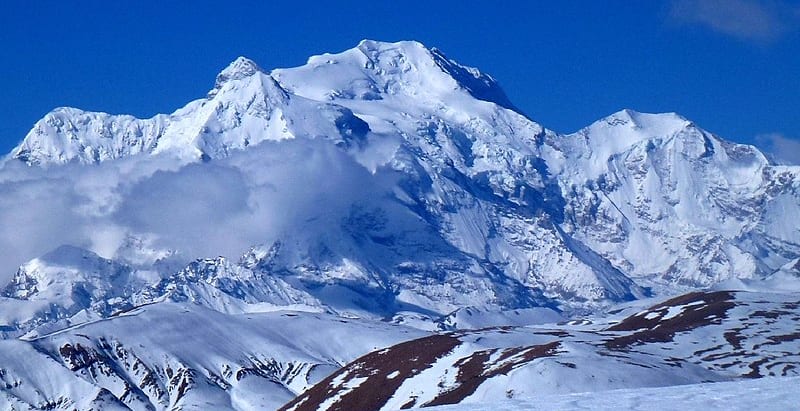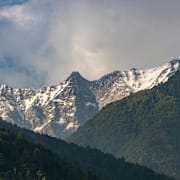
Han kan bli yngst att bestiga alla högsta bergstoppar
Den 18-årige nepalesiske bergklättraren Nima Rinji Sherpa kan bli världens yngsta att ha bestigit alla bergstoppar över 8 000 meter. Hittills har han klarat 13 av 14, och han väntas ta sig an den sista toppen nästa månad, skriver nyhetsbyrån AFP.
Att ha bestigit alla 14 toppar över 8 000 meter betraktas som den främsta bedriften inom bergsklättring. Enbart 40 klättrare har hittills lyckats med denna prestation och många har dött på världens högsta toppar.
För Sherpa är denna klätterresa ett sätt att ”inspirera en ny generation och omdefiniera bergsklättring”. Klättraren inväntar nu tillstånd från Kina för att kunna bestiga sitt sista mål: berget Shishapangma i Tibet.
bakgrund
Bergstopparna över 8 000 meter
Wikipedia (en)
The eight-thousanders are the 14 mountains recognised by the International Mountaineering and Climbing Federation (UIAA) as being more than 8,000 metres (26,247 ft) in height above sea level, and sufficiently independent of neighbouring peaks. There is no precise definition of the criteria used to assess independence, and at times, the UIAA has considered whether the list should be expanded to 20 mountain peaks by including the major satellite peaks of eight-thousanders. All of the eight-thousanders are located in the Himalayan and Karakoram mountain ranges in Asia, and their summits lie in an altitude known as the death zone.
From 1950 to 1964, all 14 eight-thousanders were summited by expedition climbers in the summer (the first to be summited was Annapurna I in 1950, and the last was Shishapangma in 1964), and from 1980 to 2021, all 14 were summited in the winter (the first to be summited in winter being Mount Everest in 1980, and the last being K2 in 2021). On a variety of statistical techniques, the deadliest eight-thousander is Annapurna I (one death – climber or climber support – for every three summiters), followed by K2 and Nanga Parbat (one death for every four to five summiters), and then Dhaulagiri and Kangchenjunga (one for every six to seven summiters).
The first person to summit all 14 eight-thousanders was the Italian climber Reinhold Messner in 1986, who did not use any supplementary oxygen. In 2010, Edurne Pasaban, a Basque Spanish mountaineer became the first woman to summit all 14 eight-thousanders, but with the aid of supplementary oxygen. In 2011, Austrian Gerlinde Kaltenbrunner became the first woman to summit all 14 eight-thousanders without the aid of supplementary oxygen. In 2013, South Korean Kim Chang-ho climbed all 14 eight-thousanders in 7 years and 310 days, without the aid of supplementary oxygen. In July 2023, Kristin Harila and Tenjen Lama Sherpa set a speed record of 92 days for climbing all 14 eight-thousanders, with supplementary oxygen. In July 2022, Sanu Sherpa became the first person to summit all 14 eight-thousanders twice, which he did from 2006 to 2022.
Issues with false summits (e.g. Cho Oyu, Annapurna I and Dhaulagiri), or separated dual summits (e.g. Shishapangma and Manaslu), have led to disputed claims of ascents. In 2022, after several years of research, a team of experts reported that they could only confirm evidence that three climbers, Ed Viesturs, Veikka Gustafsson and Nirmal Purja, had stood on the true geographic summit of all 14 eight-thousanders.
Omni är politiskt obundna och oberoende. Vi strävar efter att ge fler perspektiv på nyheterna. Har du frågor eller synpunkter kring vår rapportering? Kontakta redaktionen



